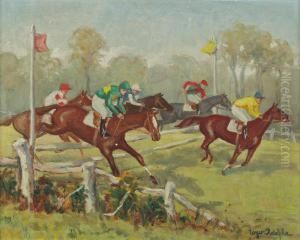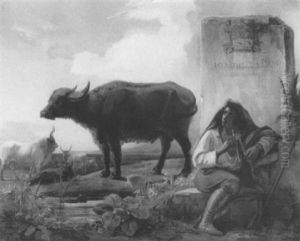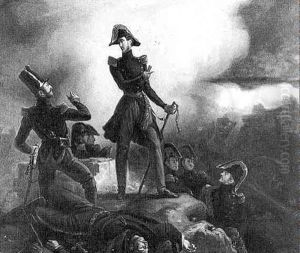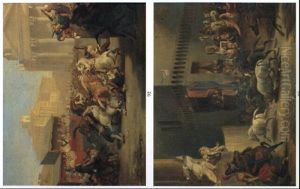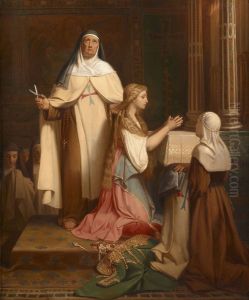Adolphe Roger Paintings
Adolphe Roger was a 19th-century French painter, born in the year 1800. While not as widely recognized as some of his contemporaries, Roger made significant contributions to the French art scene of his time, particularly in the realms of portrait painting and historical scenes. His life, though relatively short as he died in 1840 at the age of 40, was marked by a passionate engagement with the artistic movements of his era and a dedication to capturing the essence of his subjects with a keen eye for detail and emotion.
Roger's journey into the arts began at an early age, showing an early talent that would be honed and nurtured through formal education in the arts. He studied under prominent artists of the time, which helped him develop a distinct style that blended the romantic sensibilities of the era with a realism that captured the complexities of human expressions and interactions. This blend made his works particularly compelling, as they resonated with viewers for their emotional depth and technical precision.
Throughout his career, Adolphe Roger actively participated in the Paris Salon, the official art exhibition of the Académie des Beaux-Arts in Paris. His contributions to the Salon were met with positive reviews, and he gained a reputation for his historical paintings and portraits. These works often depicted scenes from French history with a dramatic flair, bringing to life moments from the past with a vividness that spoke to the viewer's imagination and sense of national identity.
Despite his success, Roger's life was not without its challenges. The competitive nature of the Parisian art world, combined with the political tumult of the era, provided a backdrop of uncertainty for many artists, including Roger. However, his dedication to his craft and his ability to capture the spirit of his time in his work ensured his place in the annals of French art history.
Adolphe Roger's legacy, while perhaps overshadowed by some of his more famous peers, remains an important part of the study of 19th-century French art. His paintings continue to be appreciated for their emotional depth, technical skill, and historical value, offering insight into the artistic and societal currents of his time. Roger's work is a testament to the enduring power of art to capture the essence of human experience and the complexities of history.

